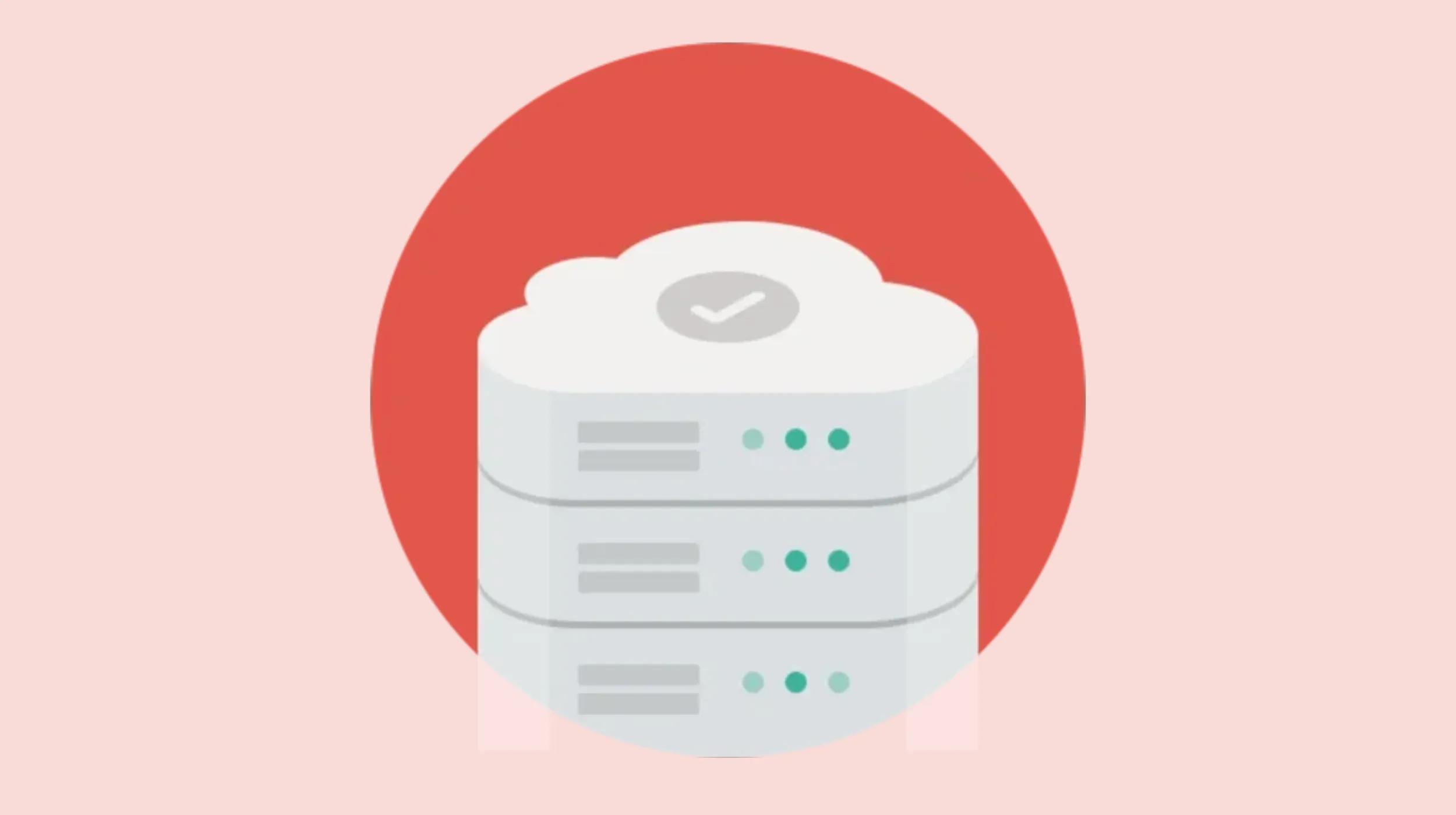If you’ve ever clicked a link to a new website only to watch your web browser sputter and stall, you know that a slow website is a pain. In fact, when websites take a long time to load, some visitors cut and run.
As a small business owner, the performance of your website matters.
Without a doubt, the appearance of your site is critical, and having quality content is imperative. But site speed makes the first impression — both with search engines and potential customers.
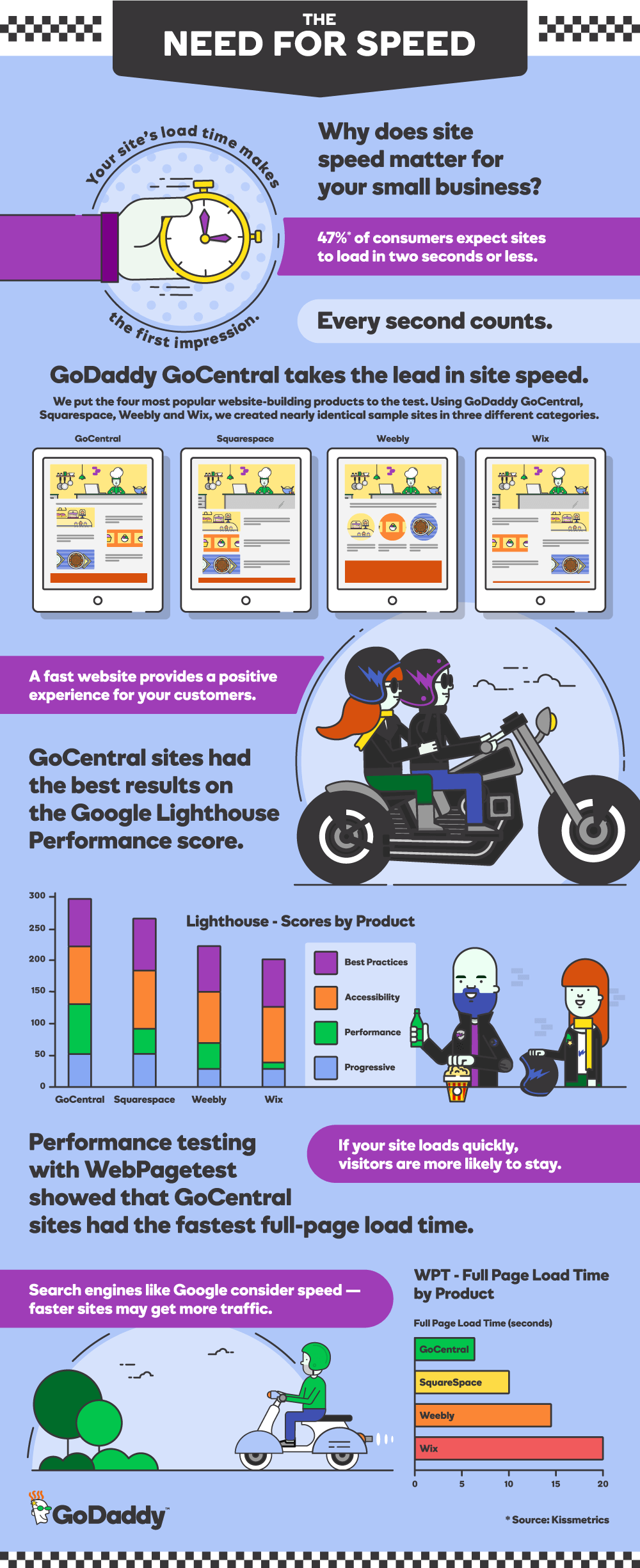
Site speed: A primer
There are several reasons why site speed matters. Faster sites provide a better experience for your site visitors and customers. And faster sites might actually get more traffic, because the algorithms that power search engines like Google consider speed-based performance metrics.
Terms to know:
- Page speed, sometimes referred to as load time: the amount of time (in seconds) it takes a specific page to go from initiation (i.e., visitor clicking on link) to all page content being fully loaded in the visitor’s browser window.
- Site speed: similar to page speed, but this takes into account multiple pages on a site.
- Search engine: a website (e.g., Google) that uses software to identify keywords on other sites.
Modern search engines aren’t just interested in keywords and links; they are designed to deliver an exceptional user experience. That’s why website optimization should be part of your SEO strategy as well.
Think of your website as a virtual welcome mat for your business.
According to Kissmetrics, nearly half (47 percent) of consumers expect sites to load in just a couple seconds. In fact, page abandonment increases with page load time. In other words, the slower your website is, the more likely visitors are to leave your site without exploring more content (or buying anything).
At GoDaddy, our developers obsess over performance data so we can provide the best possible outcomes for our customers. So we wanted to know: how do websites built using our new GoDaddy GoCentral Website Builder perform when it comes to site speed?
The GoDaddy GoCentral site speed challenge
We conducted a comprehensive performance review of sample websites built with four of the most popular website building products on the market: GoDaddy GoCentral, Squarespace, Weebly and Wix. But before we did that, we built the sample sites in a methodical way to create an objective, apples-to-apples comparison. Here’s what we did:
- We built three sets of comparable websites using each of the four products — 12 sites in all.
- The websites were designed to be representative of typical small business websites.
- Within each category — chiropractor website, restaurant website and real estate website — we made the four websites as similar as possible. Each site included the exact same text and images, as well as comparable features (e.g., image galleries, contact forms, maps).
This is what the websites looked like:
Chiropractor Websites
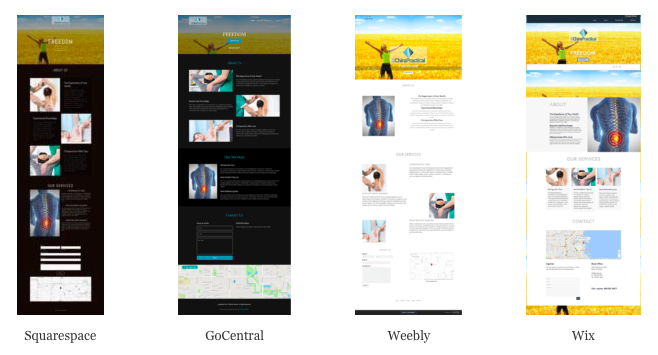
Restaurant Websites
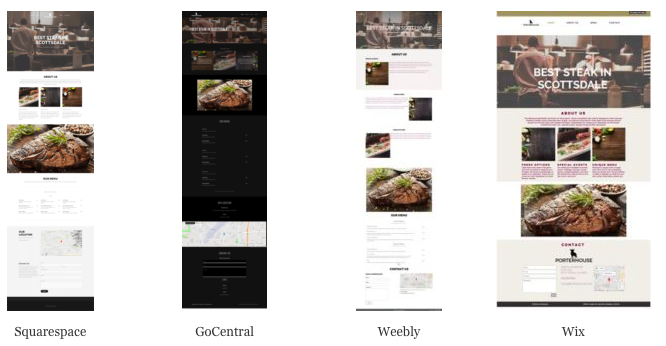
Real Estate Websites
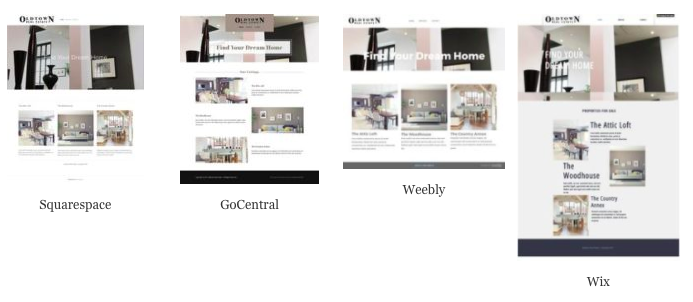
The right tools for the job
To see how GoCentral stacked up, we used two trusted open-source tools: WebPagetest and Google Lighthouse. We selected these tools because anyone can use them; we wanted this experiment to be 100-percent transparent and replicable.
We performed the tests using Google Chrome across four regions: Virginia, USA; London, UK; Singapore and Australia.
For full page load time, the lower the number, the better. We took the average results for all three website types (chiropractor, restaurant, and real estate) for each website building product. For full page load time on WebPagetest, GoCentral came in first, followed by Squarespace, Wix and Weebly.
Results varied based on a website’s features and content. The chart below shows load time for each type of website that we built: restaurant, real estate and chiropractor. The restaurant sites included menus and maps, so they took longer to load than the real estate and chiropractor sites. This was true across website builder products.
Pro tip: Avoid creating huge pages on your website. Consider splitting your content into multiple, smaller pages if possible.
Lighthouse scores websites on:
Progressive Web App: considers factors such as whether the site uses HTTPS, whether the site is mobile-friendly, and whether the site is fast enough to ensure a good experience for visitors on mobile devices.
Performance: considers performance factors such as “first meaningful paint” (how long it takes for the primary content to be visible) and whether images are sized properly to reduce load time and save cellular data for site visitors.
Accessibility: considers factors that make a website accessible to visitors with impairments; factors include color contrast and attributes for screen readers.
Best Practices: considers a variety of factors that contribute to a modern, high-performing website and help avoid performance issues.
For Lighthouse, the higher the score, the better. In this experiment, sites built using GoCentral were comparable to those built using Squarespace, Weebly and Wix for Accessibility and Best Practices. However, the GoCentral sites had a slight edge over Squarespace sites for the Progressive Web App Score. And GoCentral sites had impressive results on the Lighthouse Performance score.
Why websites built with GoDaddy GoCentral are fast
In this experiment, we learned that the websites built with GoCentral required fewer bytes and requests than the comparable sites built with competing products. For instance, using WebPagetest, we discovered that on average, the sites built using GoCentral are “smaller,” even though they contain near-identical content.
GoCentral processes your website images in real time, which means it serves only the bytes needed for the specific device your website visitor is using. Other techniques help prioritize “first paint” and visitor interactions to provide a more pleasant experience for site visitors.
Download the white paper to learn more
If you’re interested in learning more about the methods and results of our site speed challenge, please check out our white paper belowon the topic, which includes details to help anyone replicate our experiment.
The Website Builder Performance Challenge from GoDaddy
If you remember one thing about site speed ...
As a small business owner, you might not think twice about the speed of your website. You might not care about the speed of your site, as long as it looks pretty good. But guess what? Google cares about the performance of your site. And potential customers — most of whom are accessing the web from their mobile phones — don’t have time to wait around.
If you’re going to bother with a website, you need one that is fast, modern and designed for mobile devices.
If you have doubts about your existing site, try out the user experience yourself on a variety of devices. If you like numbers, test your own site on WebPagetest and Lighthouse.
Try GoDaddy GoCentral for free
Want to see for yourself how fast a Godaddy GoCentral website can be? Try GoCentral for free. Build a simple site in less than an hour, and add additional features like email marketing and an online store when you’re ready.
Bonus: GoCentral is entirely mobile-friendly. Build and preview your website anytime, anywhere, on your phone or tablet, and add or change photos as often as you like.





